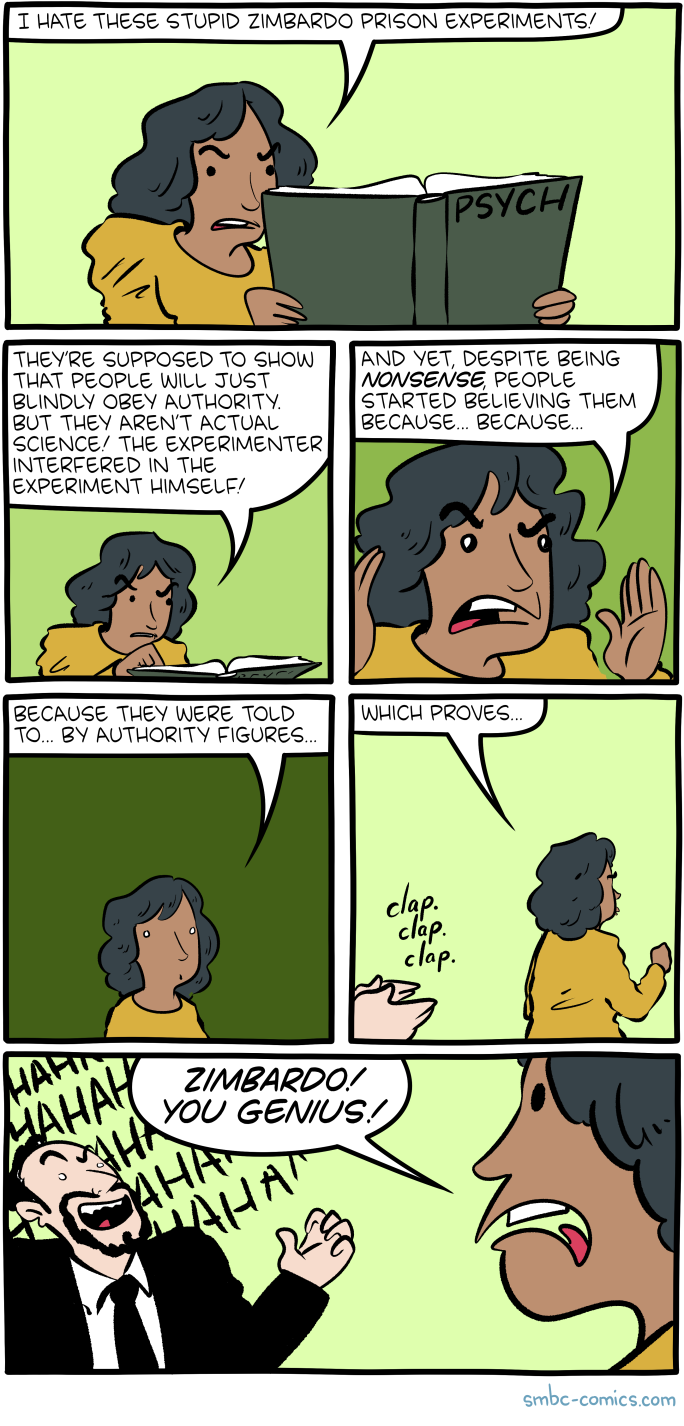Stanford Prison Experiment
Fleeting- External reference: https://en.wikipedia.org/wiki/Stanford_prison_experiment
- see,
The Stanford prison experiment (SPE) was a social psychology experiment that attempted to investigate the psychological effects of perceived power, focusing on the struggle between prisoners and prison officers. It was conducted at Stanford University on the days of August 14–20, 1971, by a research group led by psychology professor Philip Zimbardo using college students.[1] In the study, volunteers were assigned to be either “guards” or “prisoners” by the flip of a coin, in a mock prison, with Zimbardo himself serving as the superintendent. Several “prisoners” left mid-experiment, and the whole experiment was abandoned after six days. Early reports on experimental results claimed that students quickly embraced their assigned roles, with some guards enforcing authoritarian measures and ultimately subjecting some prisoners to psychological torture, while many prisoners passively accepted psychological abuse and, by the officers’ requests, actively harassed other prisoners who tried to stop it. The experiment has been described in many introductory social psychology textbooks,[2] although some have chosen to exclude it because its methodology is sometimes questioned.[3]

Notes linking here
- Daniel Kahneman: Thinking Fast and Slow, Deep Learning, and AI | Lex Fridman Podcast
- expérience de Milgram